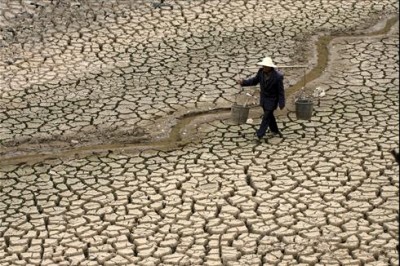Top Ten Countries at Risk of Water Shortages

This article first published in July 2010 had already warned of a looming crisis
Sub-Saharan African countries top list of those with most vulnerable water supplies as report warns of ‘looming crisis’ in both Asia and Africa from pollution and depletion of natural water resources
Depleting water supplies are increasing the risk of both internal and cross-border conflict as competition between industry, agriculture and consumers increases, according to an assessment of world most vulnerable countries.
The report from the analysts Maplecroft, says that the ten countries most at risk are: Somalia (1), Mauritania (2), Sudan (3), Niger (4), Iraq (5), Uzbekistan (6), Pakistan (7), Egypt (8), Turkmenistan (9) and Syria (10).
The ranking was based on an assessment of access to water, water demands and the reliance on external supplies with countries like Mauritania and Niger more than 90 per cent reliant on external water supplies.
Dam conflict
Egypt, ranked eight by the report, is dependent on water from the Blue Nile, and is in the midst of an ongoing dispute with Ethiopia over the construction of the Gibe III dam in Ethiopia, which it claims will further deplete its water resources. The dam, which would be the largest in Africa, has also faced opposition from NGOs who claim it will devastate fisheries in neighbouring Kenya.
A separate report has highlighted the worsening problem of water scarcity in the Himalayan sub-region of India, Bangladesh, China and Nepal.
Although none of these countries made Maplecroft’s top ten list, the Indian-based Strategic Foresight Group (SFG) say they will have to cope with 275 billion cubic meters less water within 20 years – more than the total amount of water currently available in just one of the countries – Nepal.
It says that while global warming may take two centuries to seriously deplete the Himalayan glaciers, some impacts will be visible sooner. The Yellow River in China and the Ganges (with its tributaries) in India are expected to become seasonal rivers by the second half of this century.
The high water demands of agriculture in both India (where it accounts for 90 per cent of water usage) and China (where it accounts for 65 per cent of water) will lead to a drop in wheat and rice yields of between 30-50 per cent by 2050, according to the report. It said both countries would be forced to import 200-300 million tonnes of crops.
Water pollution
In addition to natural depletion, the report also pointed out the increasing scarcity of water resources due to pollution. The Yellow River Conservancy Committee estimates 34 per cent of the river is unfit for drinking, aquaculture, and agriculture. An estimated 30 per cent of the tributaries of Yangtze River are extremely polluted and in India, 50 per cent of the Yamuna River, the main tributary of the Ganges is extremely polluted.
Data for rivers in Bangladesh are not available, but a study published recently in the Lancet medical journal said up to 77 million people in Bangladesh had been exposed to toxic levels of arsenic from naturally contaminated groundwater supplies.
In total, SFG says that more than 30 per cent of the major Himalayan rivers are biologically dead and unfit for people or fish.

